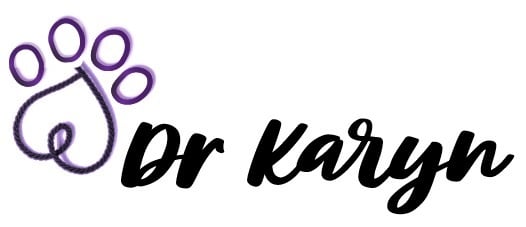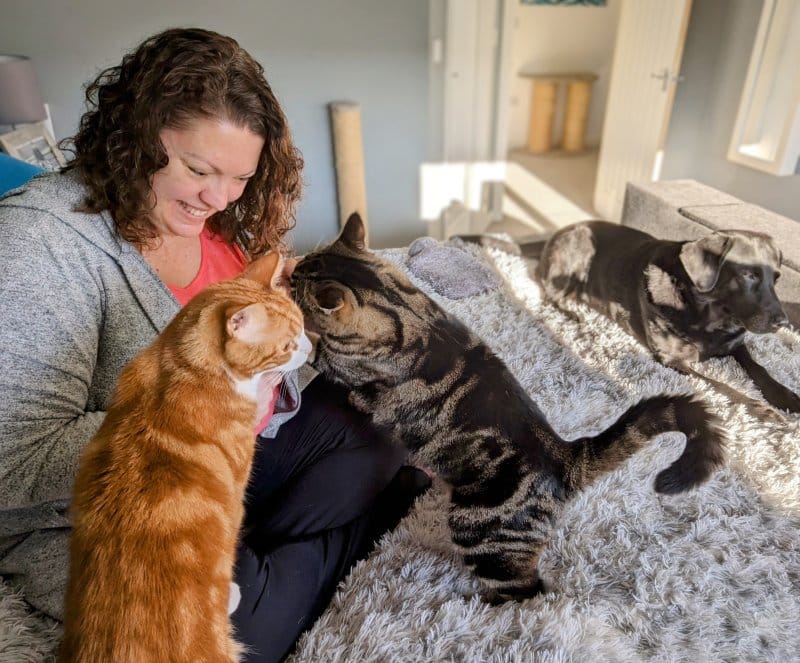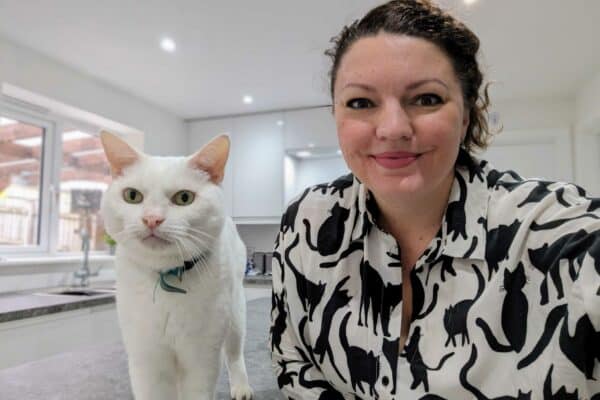Hi, I’m Dr. Karyn! Read my introduction to learn more about me and meet my five hilarious cats: Clutch, Cyril, Alex, Zelda, and Zazzles.
I have a confession to make: I am addicted to my phone. There, I’ve said it. I’m not proud of it, I’ve tried to fight it, but I know I’m not alone.
I’m sure that many of my fellow Catsters out there are familiar with that compulsion to check your phone every 5 minutes (if we can even wait that long) for messages, likes, gossip, or funny clips. Losing hours down the TikTok rabbit hole, “doom-scrolling” into the wee hours, all too aware that we are the victims of addictive algorithms designed to keep us doing exactly that. At one stage, I even downloaded an app to try to break my phone habits; the irony of using a phone program for my phone addiction is not lost on me! But the allure of adorable animal videos, hilarious pranks, and emotional rescue stories keeps me coming back for more.
There is one thing, however, that never fails to get me to put down my phone, even if it is reluctantly, and that is a big fluffy cat butt in my face!
Cyril is definitely the main perpetrator in my house, and is also unfortunately the heaviest of my cats to have sitting on my chest. Even though he is initially met with frustration, his determination to place himself firmly between me and my screen, eventually forces me to put down the phone and enjoy his demanding feline attention. Clutch and Alex’s technique tends to be a combination of plaintive meowing and forcefully rubbing their head against my phone until I give in and turn my attention away from the screen to give them the fuss they want, and deserve. And when you think about it, how ludicrous is it that I am ignoring the real, wonderful creatures that share my home to watch clips of someone else’s cat, dog, or pet raccoon?
Side note, I don’t think that wild animals should be kept as pets, but I want a raccoon so badly!! 😆
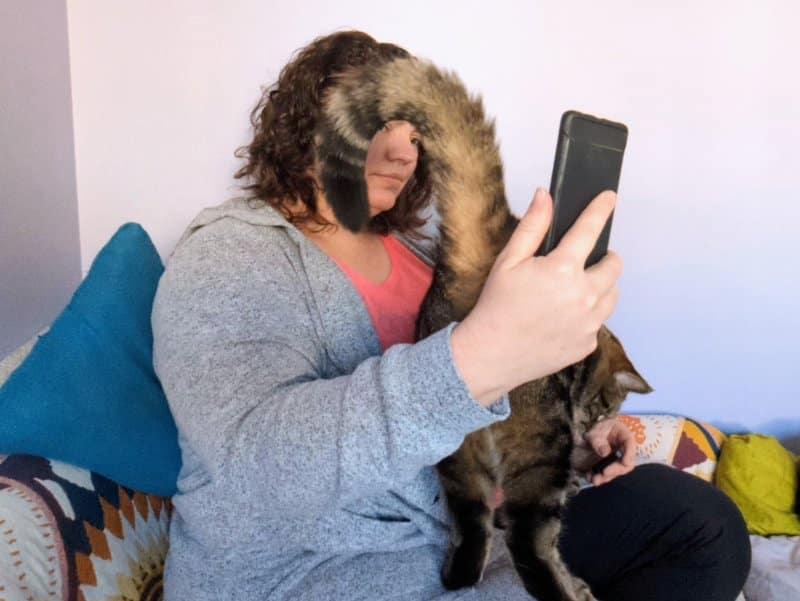
Why Do I Fight It?
I love cats. I love all animals, just like I know you all do. So why is irritation my first reaction to my cats getting between me and my phone? It’s crazy, right? If you’ve ever watched The Social Dilemma, it’s actually pretty terrifying to see just how cleverly the tech used by social media companies and advertisers learns our habits and keeps us glued to our screens. Like many people, I deleted apps and suspended my Instagram account immediately after finishing the documentary. And like most of them, I was back within a few weeks.
The trouble is that without our phones, we miss out on so much of what is going on in the world. Not just that, but our knowledge and awareness can be greatly enhanced by what we watch and read online, provided we’re looking in the right places. So, I accept my constant companion as a necessary evil, and hope that by clicking on more educational links, my personalized algorithms will help keep me on track, although I still can’t resist a good racoon clip!
With the help of my cats, I am also learning to take a break.
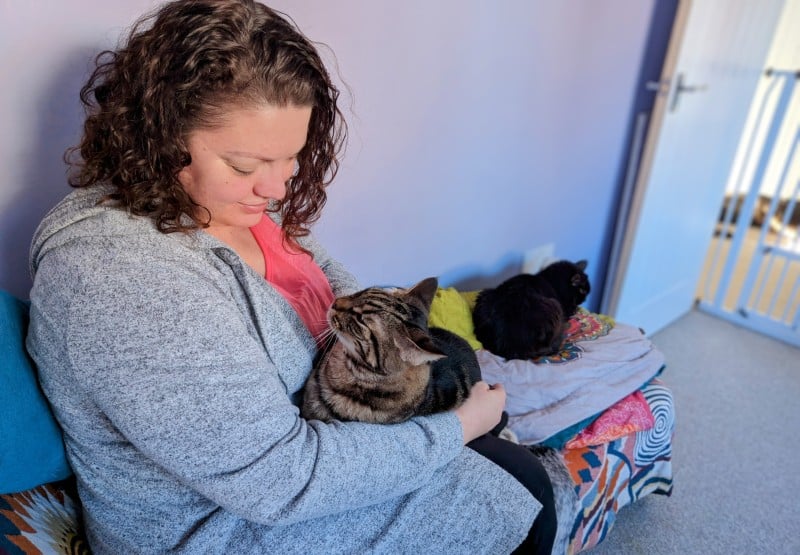
How My Cats Help Me to Switch Off
With the possible exception of the late Grumpy Cat, our feline friends do not care about the internet. They aren’t into following trends or likes, and the only tweets they care about are the ones originating from birds. What they do care about is that the person they love, the person they have deigned worthy of their attention and affection, is worshiping the small rectangle in their hand instead of them.
We all know that cats can be aloof. Their independent nature means that they seem not to need our affection, making it all the more special when they seek it out. So when I find my screen blocked by a fluffy Cyril butt, or my phone being jostled by affectionate head bumps, I take that as my signal to put the phone away and spend time with my cats. I give them my full attention, which they absolutely deserve. As a result, I have found it easier to put down my phone more often, disconnecting from it to connect to the world around me.
Although it may not be their intention, my wonderful cats are helping me manage my phone addiction and improve my mental health and well-being; just another reason why cats are awesome.
